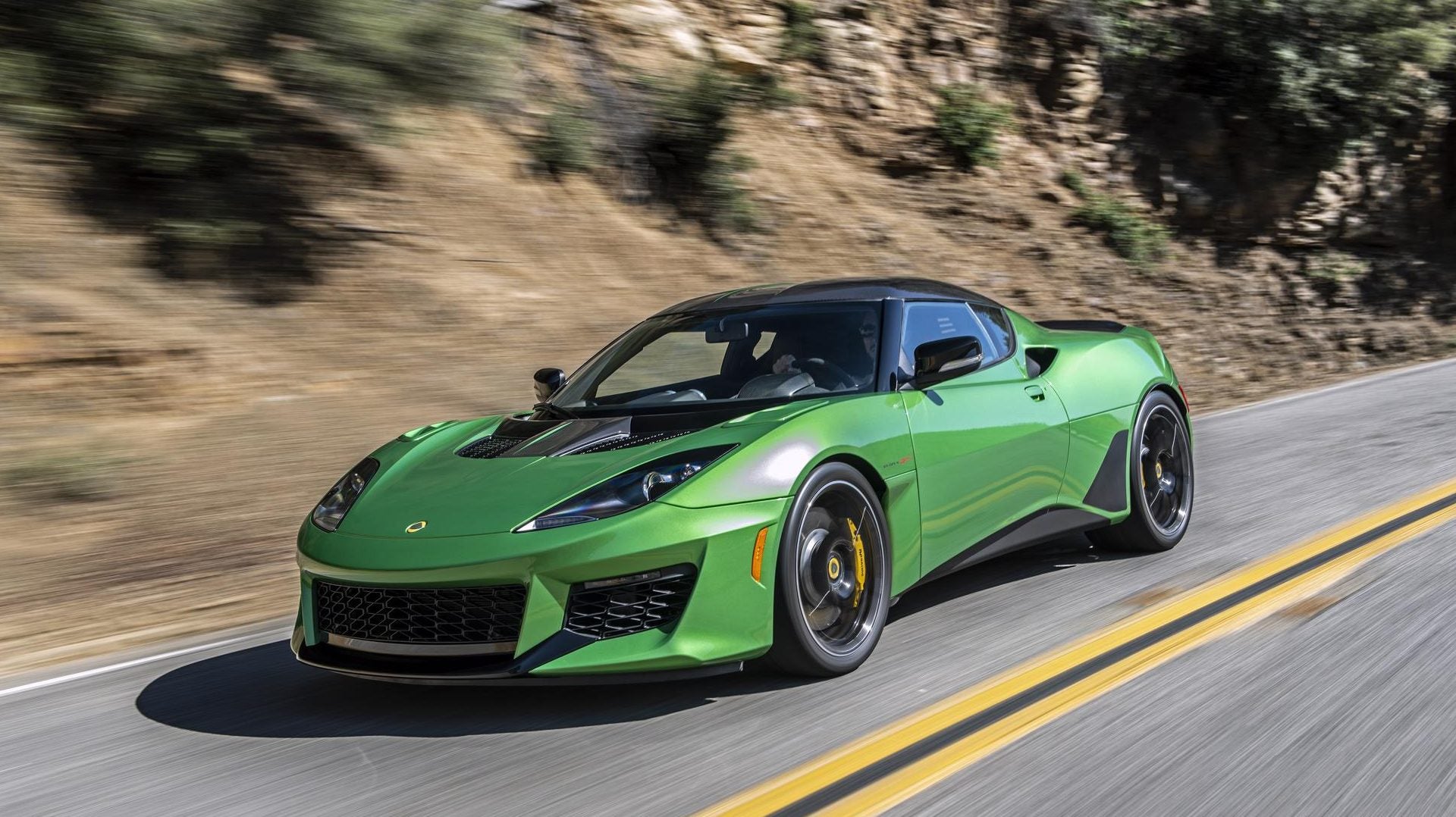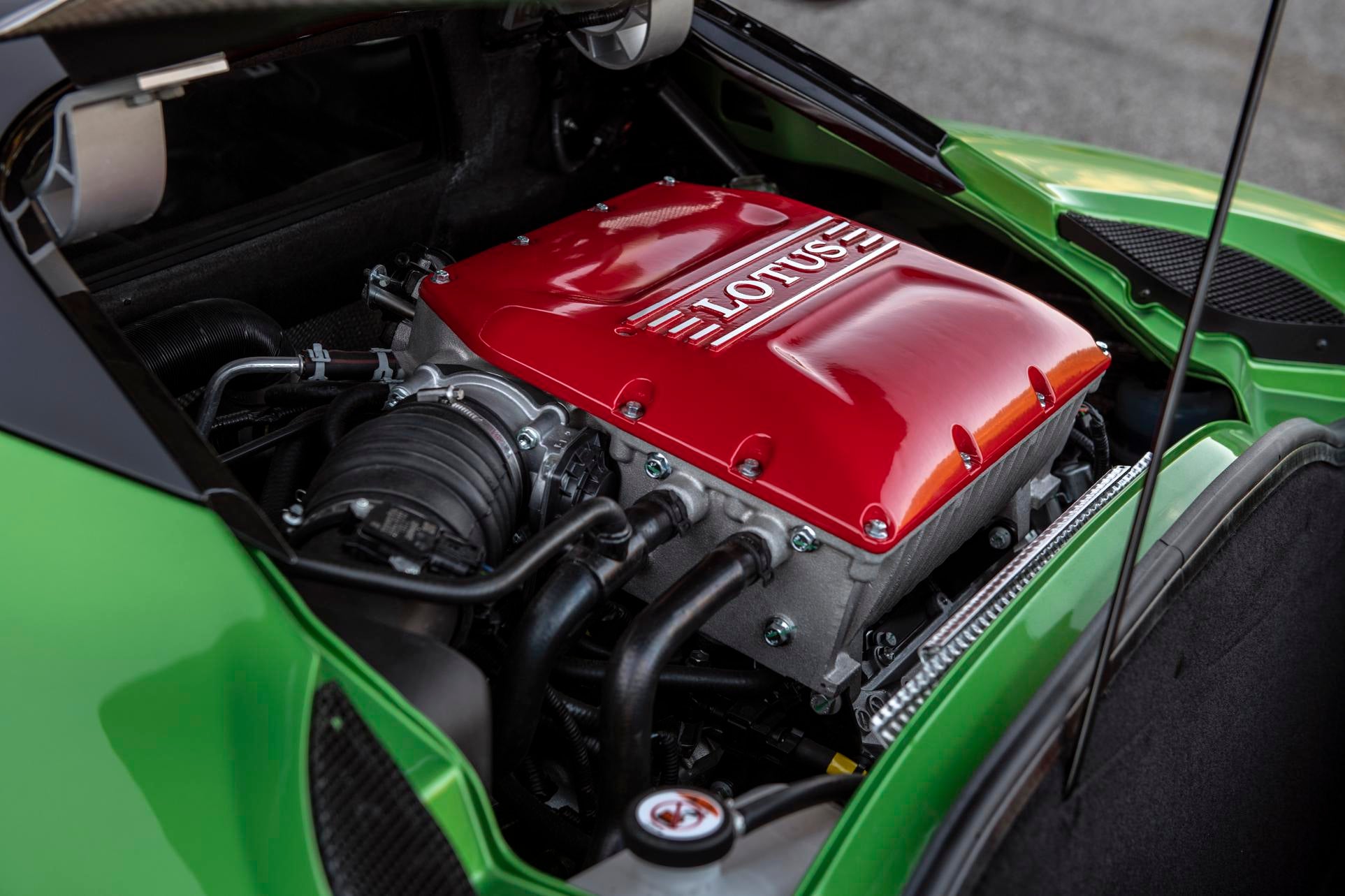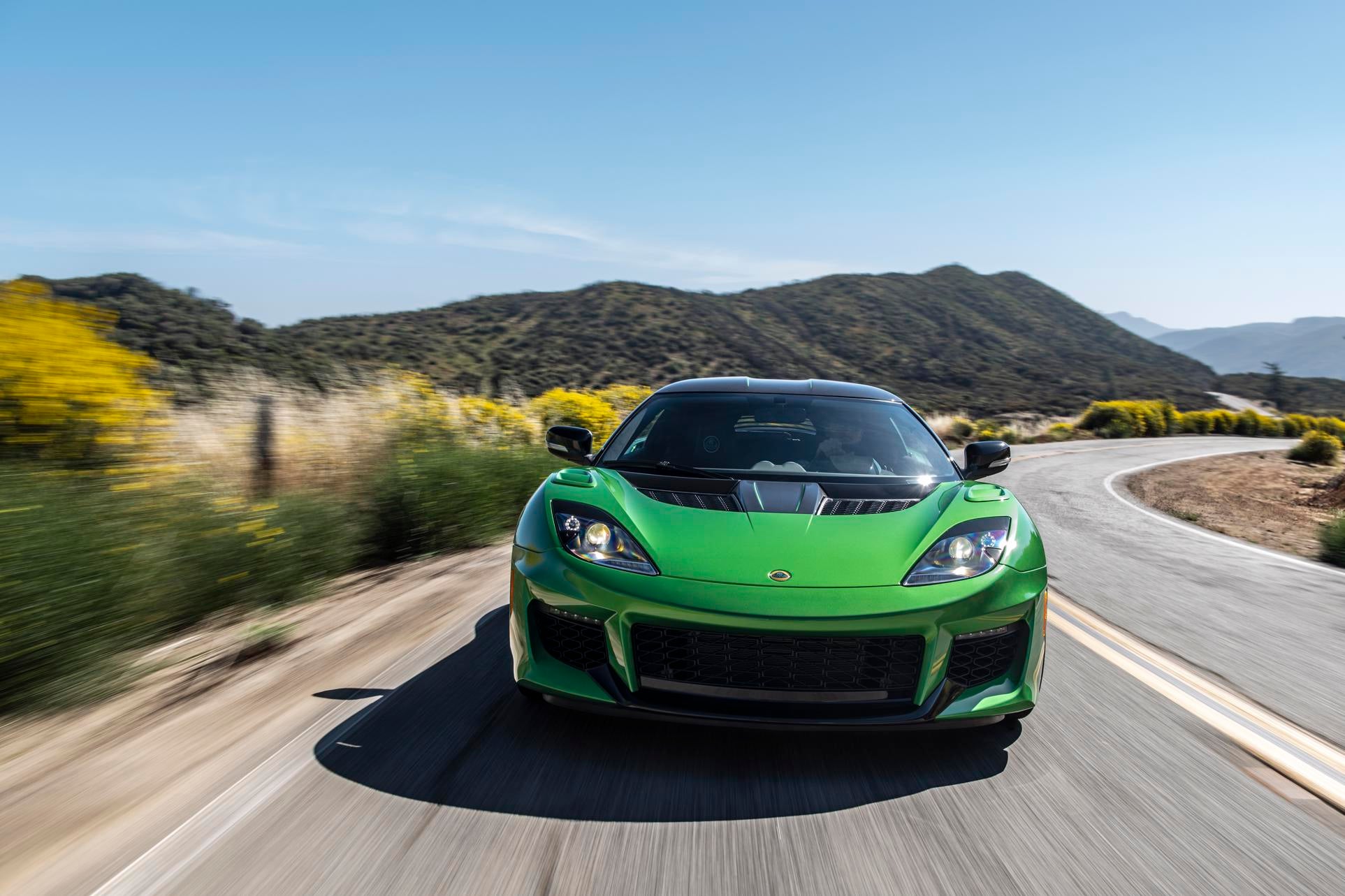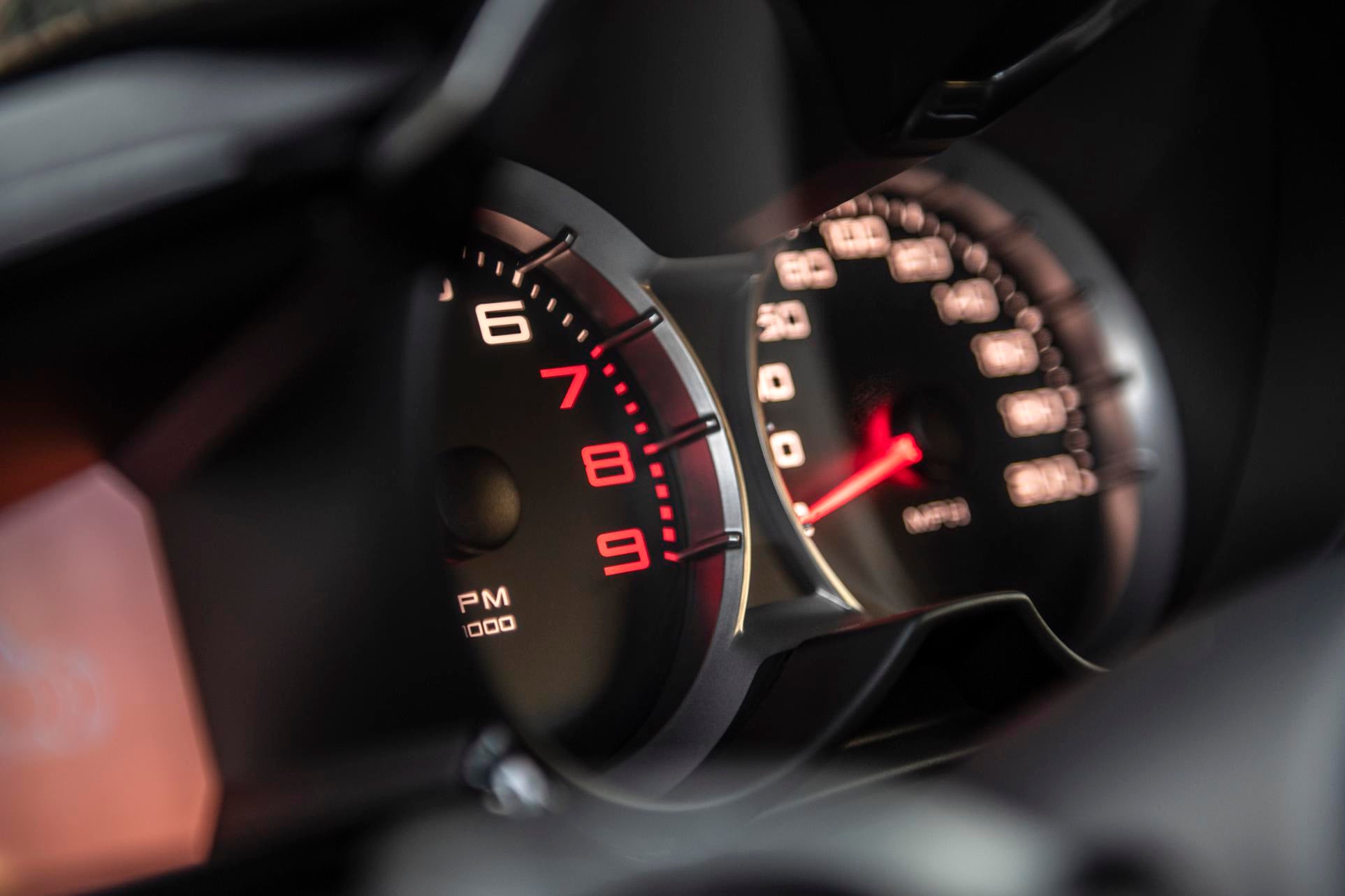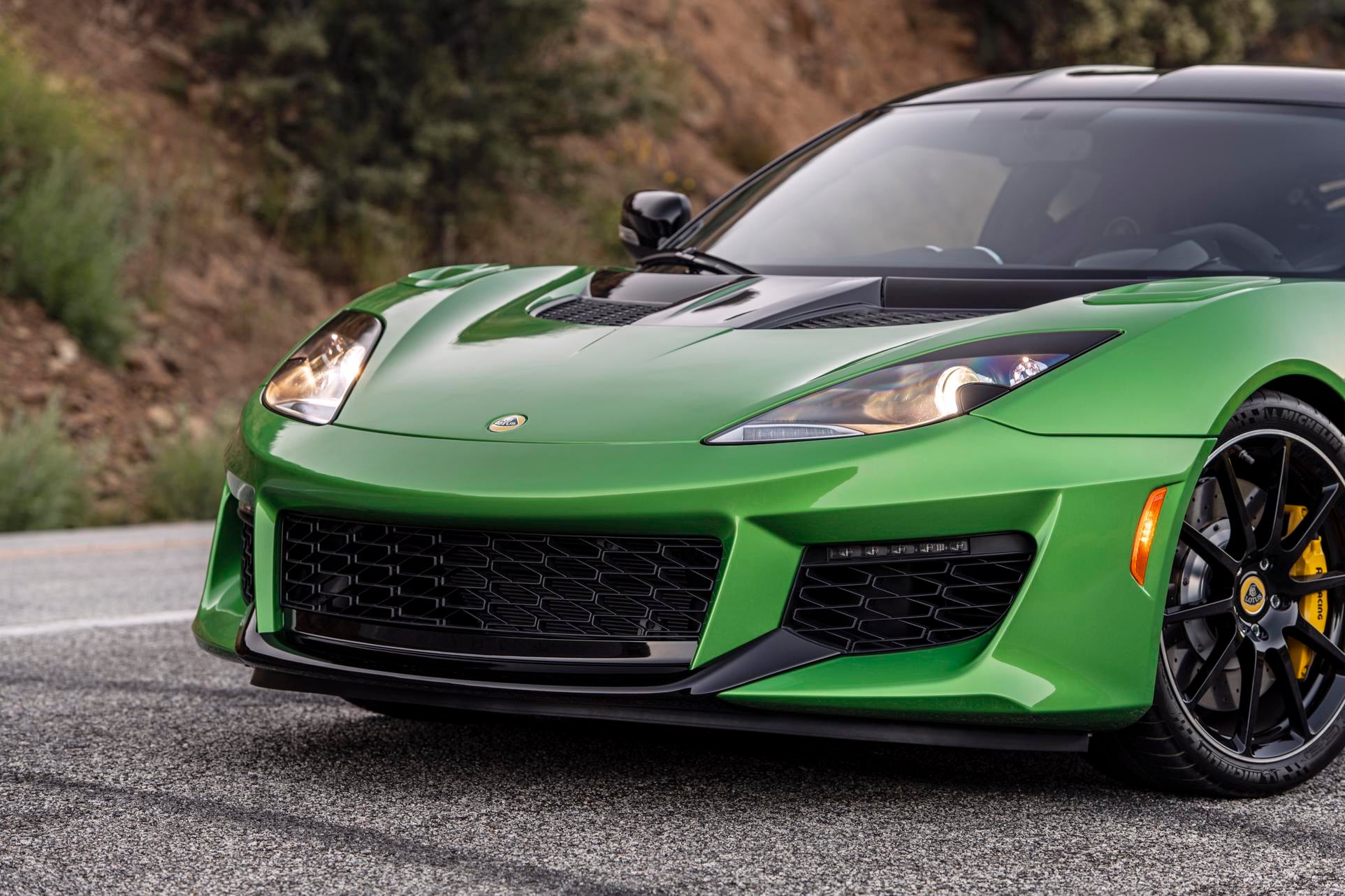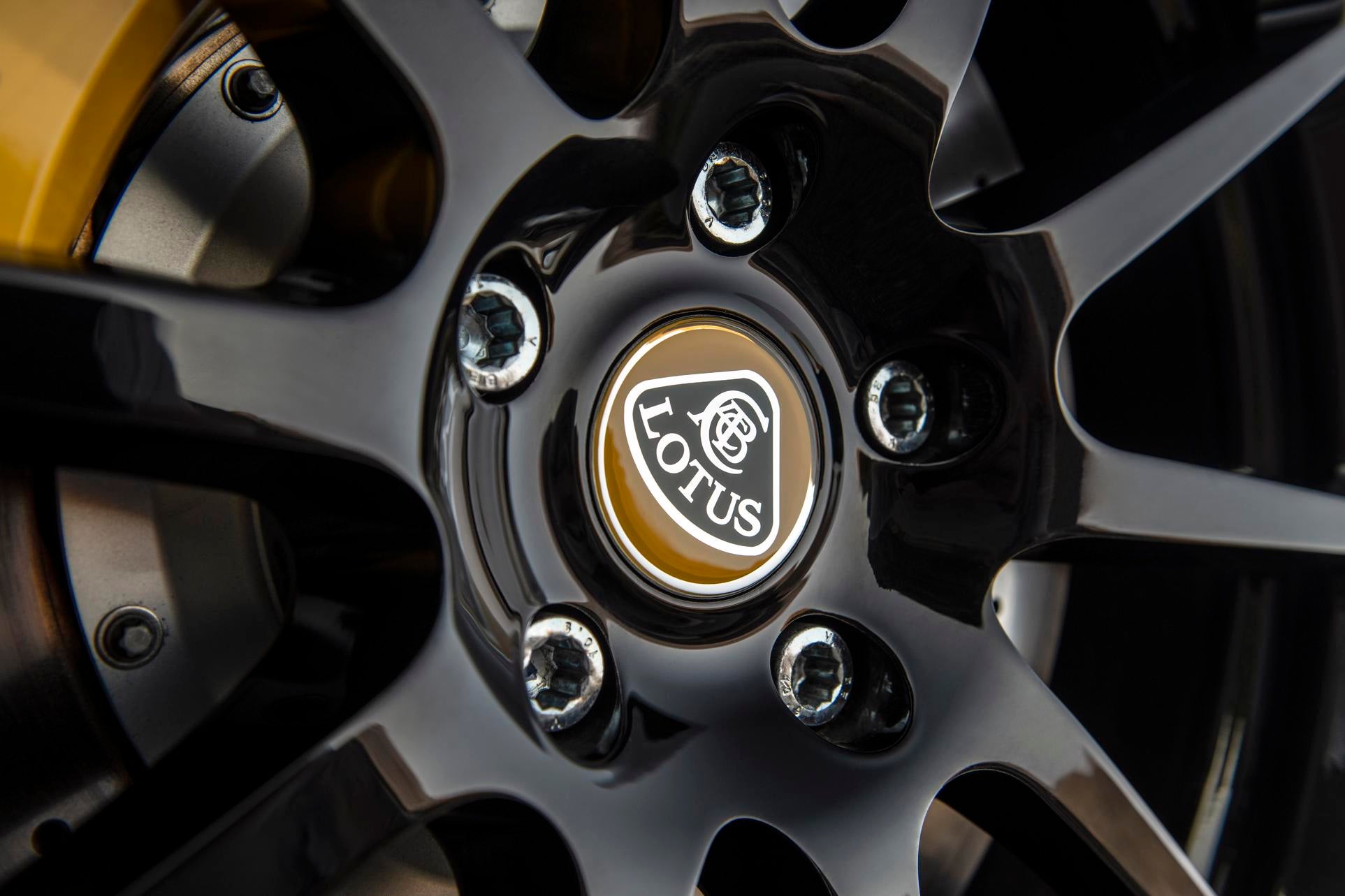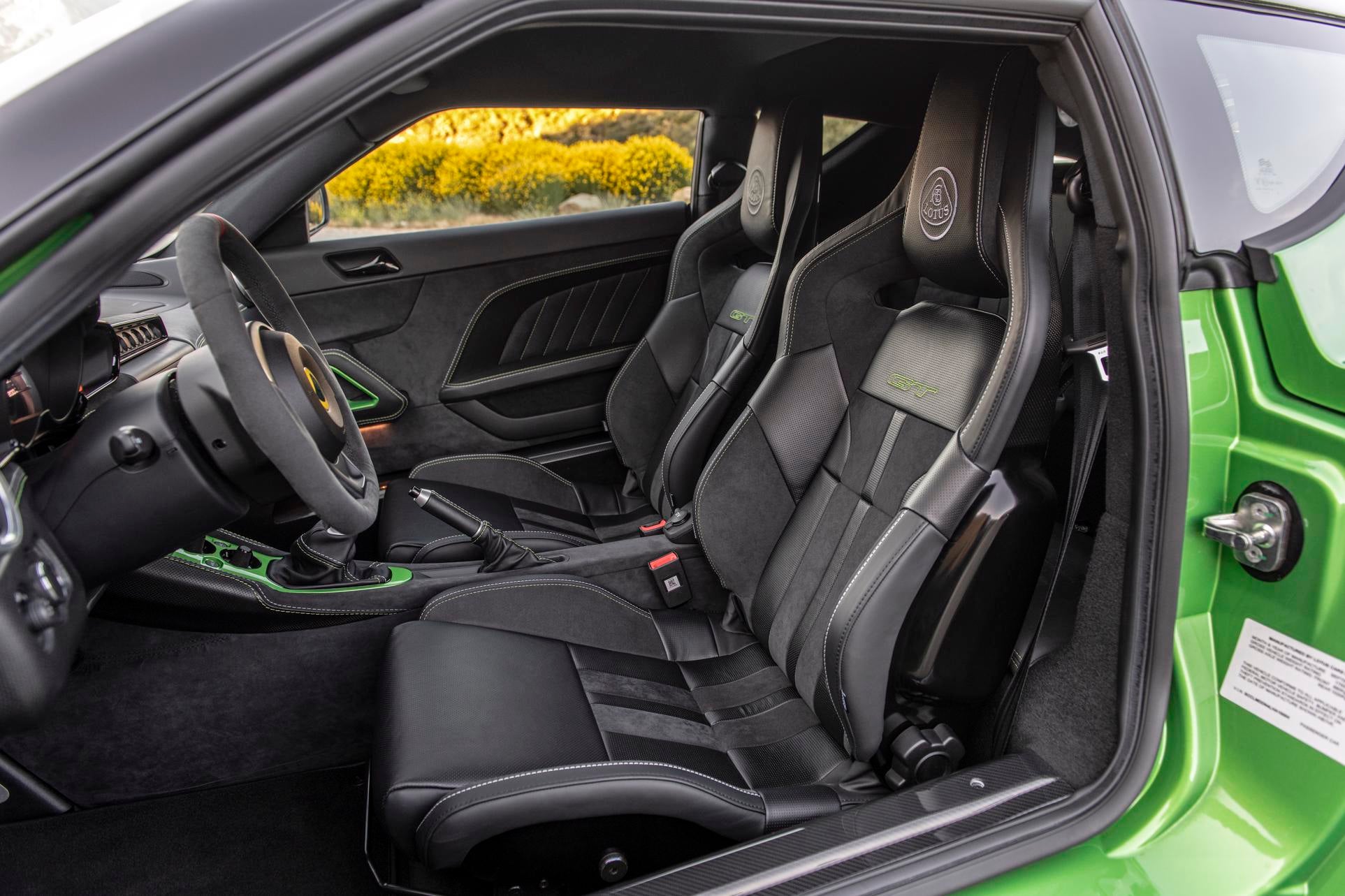Modern sports cars are prodigies. Wunderkinds whose power and traction are corralled by driver-assist systems that all but ensure Hamilton-smoking hot laps. Zero-to-hero with the push of a button, though, means most no longer require superhuman skill to drive at the limit. The heathens in Hethel loathe that reality, and they've built the 2020 Lotus Evora GT to combat our growing bio-mechanical augmentation.
Britain's Lotus sees itself as the last bastion for drivers. Sure, the futuristic Skittles from Modena, Sant’Agata, Woking, and Stuttgart all invite a good thrashing, but that rainbow spectrum has enough scene-stealing stability controls and electrical nannies to film a third Mary Poppins. Lotus didn’t want the Evora GT to be “practically perfect in every way”—it’d rather be “practically imperfect,” leaning on its mechanical grip, good ol' fashioned lightweighting, and, wouldn’t you know it, a driver’s actual skill.
Streaking through California’s Ojai Valley in a Vivid Green Evora GT showed that while those modern machines are wonderfully absurd, Lotus’s tenets of driver engagement and old-school dynamics aren’t just enticing, they’re as addictive as any black market psychedelic. Laced with supercharger whines, a manual transmission, and a barking titanium exhaust, absolutely nothing delivers a sensory experience quite like the Evora GT. It’s the anti-modern sports car.
The 2020 Lotus Evora GT, By the Numbers
- Base Price (As Tested): $96,950 ($129,595)
- Powertrain: Supercharged 3.5-liter V6 | 416 horsepower, 317 pound-feet of torque | 6-speed manual or 6-speed automatic | rear-wheel drive
- 0-60 mph: 3.8 seconds
- Top Speed: 188 mph

A Seat, a Steering Wheel, and a Stick. It’s All You Need
Aside from the Save-Your-Ass-Systems™, today’s sports cars are replete with the modern conveniences their moneyed buyers demand. That means screens for gauges, Apple CarPlay, multi-zone HVAC, navigation, premium sound systems, and on-demand analytics that tell you how many G’s you pulled making a U-turn into Arby’s. The Evora GT eschews such trivial amenities. There’s no need for them when driving is the focus.
As such, the Evora GT’s spartan cabin is stripped to only the bare essentials: An initially silly magnesium steering wheel, a lightweight aluminum manual transmission, and two carbon bucket seats. Tunes are handled by an outdated but functional Alpine unit. Little else clutters the cabin, though the A/C does blow ice-cold, a welcome feeling considering the somewhat austere surroundings.
Forward sightlines are near-perfect thanks to a panoramic windshield similar to McLaren’s; rear visibility is a different story, dominated by a louvered rear hatch, and the rearview mirror shows little besides the mechanical throttle linkage blip with each depression of the gas. Silly theater, but it's endearing in such an anachronistic machine.
A Toyota Engine, an American Supercharger, and British Engineering Equals Giggles
The Evora GT’s anti-modern ethos remains consistent underneath its louvered decklid. Between the extruded aluminum chassis and carbon fiber body panels sits a 3.5-liter V6 yanked out of the last generation Toyota Camry. Originally designed for the mundane, the Toyota engine arrives at the Hethel factory with all of 268 horsepower. But it leaves with much more after Lotus’s wild-eyed engineers knife their way through boxes of bolt-on parts.
Standard upgrades like intakes, pulleys, spark plugs, fuel pumps, and others get slapped onto the lowly Toyota V6. OK, fine. But here's where it gets interesting—once finished with those small modifications, Lotus shotguns a Budweiser, salutes the American flag, and slaps a water-to-air charge cooler and Edelbrock-sourced supercharger onto the engine. That patriotic science pushes the Evora GT to 416 horsepower and 332 pound-feet of torque. And the end result, at least when combined with the optional titanium exhaust, is as sweet as apple pie.
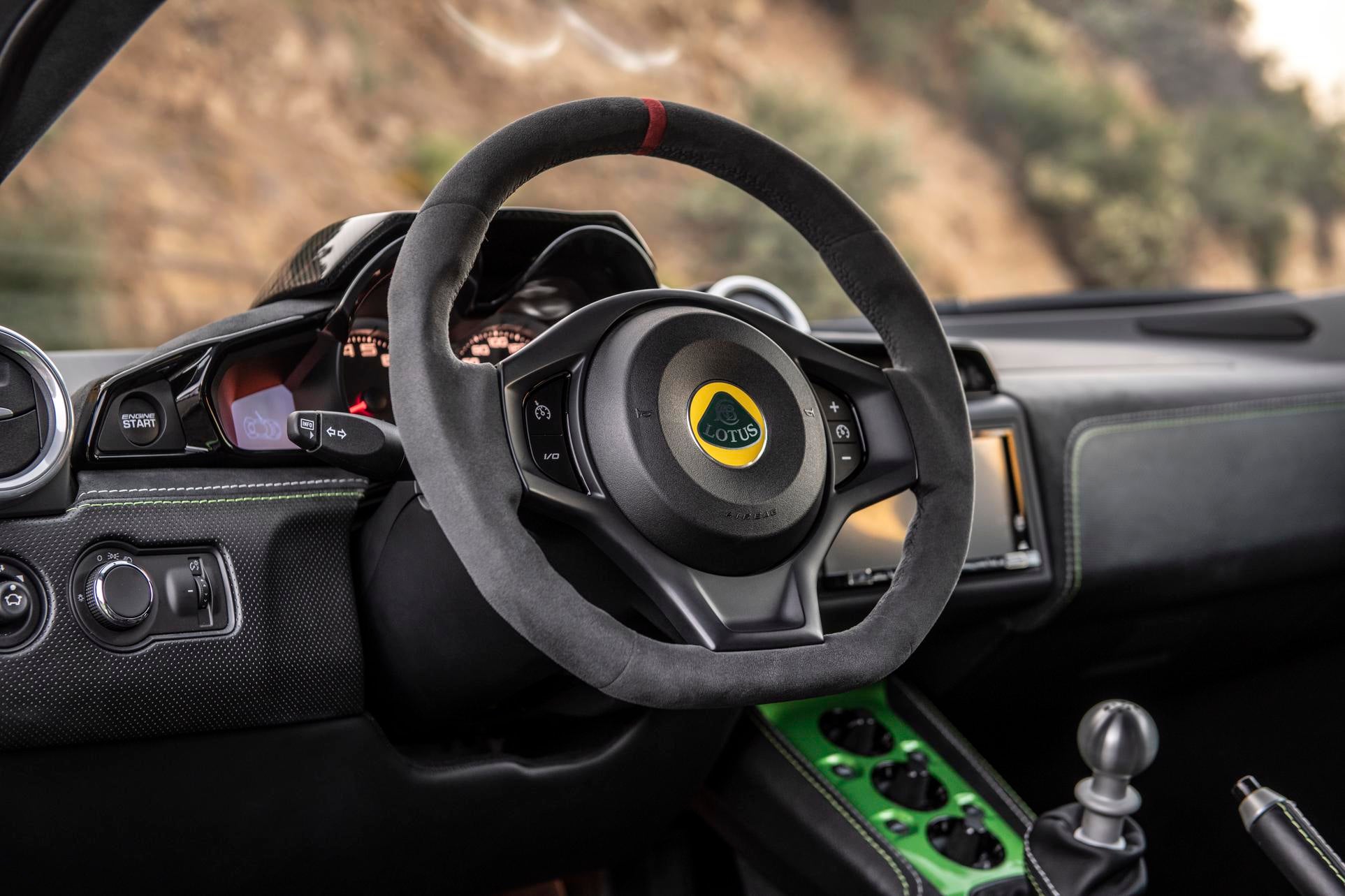
Key in—yes, there’s still a key—engine on, belt buckled, and transmission primed, it’s immediately clear the Evora GT is something special. Sensation abounds, even at low speeds. There’s this semi-biological imperative to blip the throttle whenever stopped at a light, slowed for traffic, or come across a pack of wild children staring, pointing, and hollering at the Vivid Green machine.
Past the normalcy of suburban California and up into the Ojai mountains along Highway 33, the Evora GT’s singular identity asserts itself. That magnesium steering wheel, which I believed to be for peacocks boasting about weight savings, is suddenly essential; nuances not felt outside a GTE car at Spa-Francorchamps are sent through its lithe diameter. The front tires—Michelin Pilot Cup 2s—move with such sudden directness that you’ll wonder if the Evora GT’s doubles as a Zoltar machine.
There can be no sentence in a review more tired and cliche than praise for a Lotus manual transmission. But it must be said: This gearbox is what every transmission engineer aspires to produce. It’s mechanized, notchy, and feels every ounce like a rifle bolt. You end up wondering why Lotus even offers a 6-speed automatic.
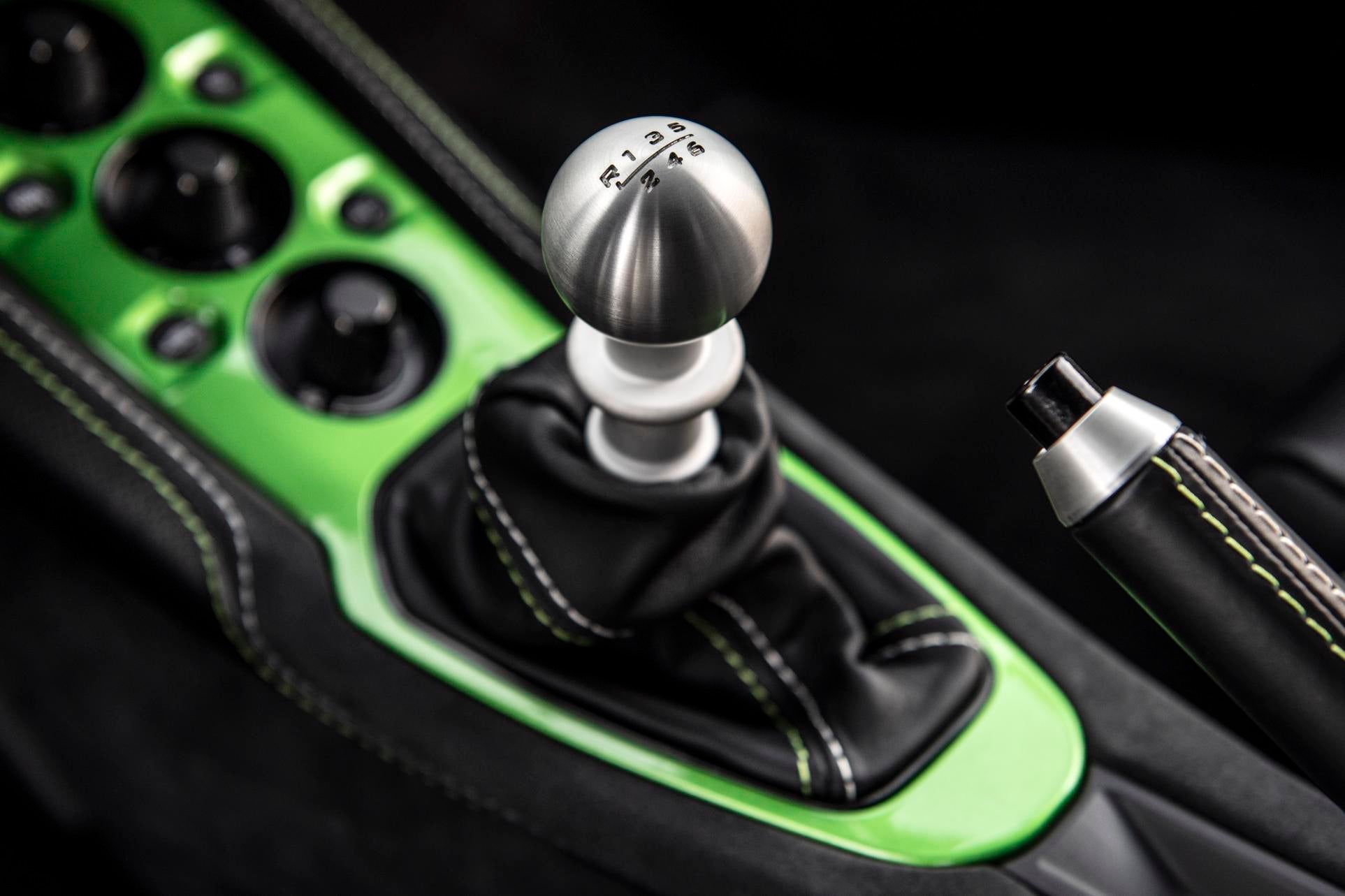
Corners illustrate the chassis is a Taiji master, moving like water with each turn, bump, and undulation. It’s never anything but settled throughout, pouring over the surface with such poise and preternatural grace that you'll lose track of your ever-climbing speed. Velocity increases while grip never wanes. Your neck muscles give out far sooner than the tires. That doesn’t mean the Evora GT’s 416 horsepower isn’t felt. No, when it's in the power band, that supercharged Toyota V6 shoves you in the gut like a horse’s hoof sprung after full recoil.
Tap dancing beneath the steering column, downshifts are lightning, upshifts thunder. A lightweight flywheel means the engine is rev-happy. The only issue—and this personal pedantry—is that the pedal box is way too tight. Even wearing leaner Adidas, there’s no heel-toeing or left foot braking. This box was built for ballerinas. But that's sweating the small stuff. Really, who cares when something is this good?
Better Than a Porsche? Maybe.
Heading back down from the clouds, I sparred with my driving partner over the Evora GT’s laughable infotainment, the cramped interior, the pedal box built for 1970s Italian men, and the less-than-optimal visibility through the louvers (again, we love a good louver). We played the eternal game of “Which Would You Have?”, pitting the Evora GT against the Acura NSX, Mercedes-AMG GT, the mid-engine Corvette, and other precious machinery. All worthy dream garage additions, but we still came away choosing the Evora GT. There’s just this unrepeatable, ephemeral edge to its anti-modernity. Then we remembered Porsche’s new 718 Cayman GT4.
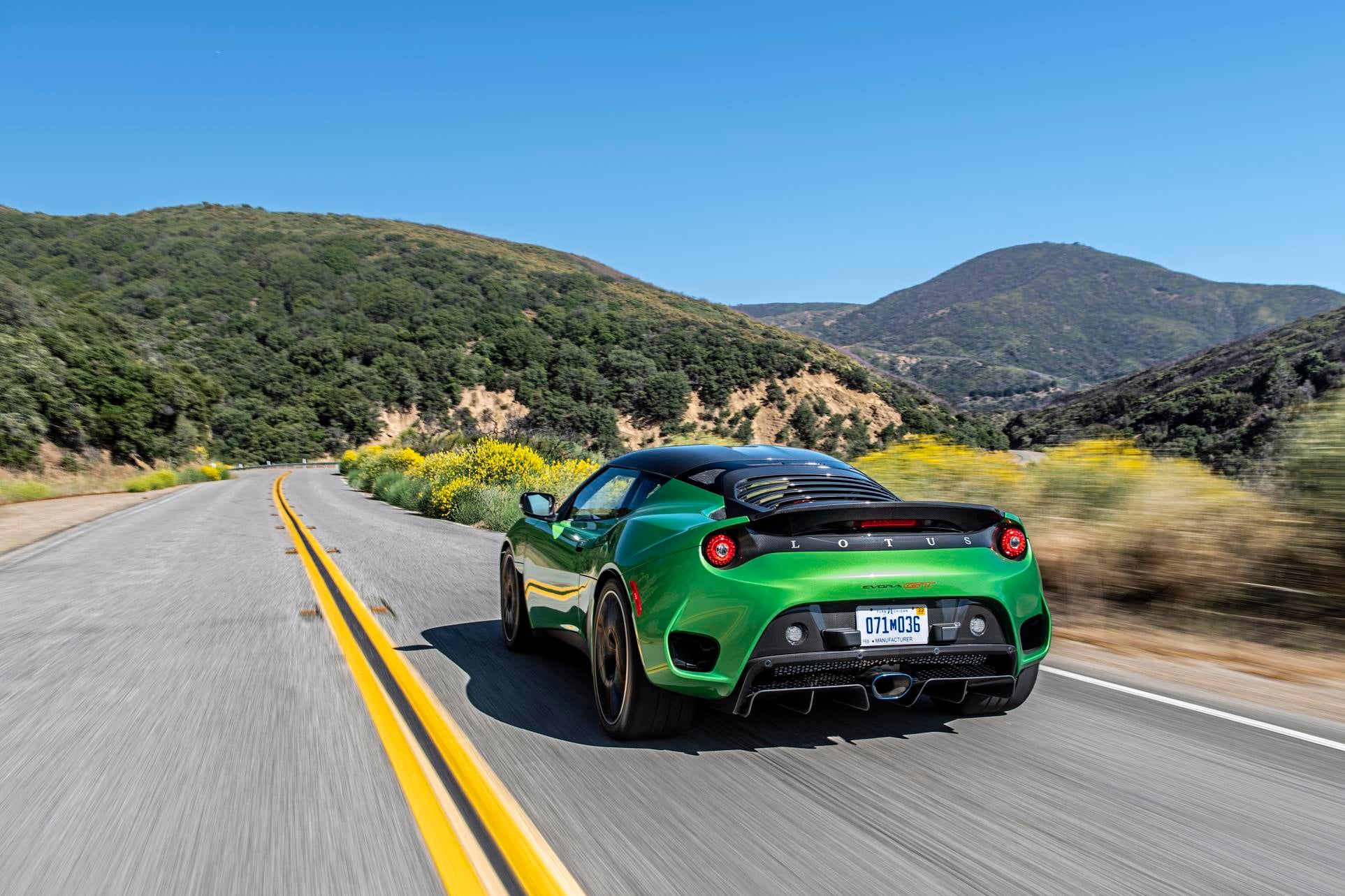
The two are spec sheet stablemates with mid-engine 6-cylinders, two seats, manual transmissions, grippy Michelin tires, upgraded brakes, and a starting MSRP a hair's breadth under $100,000. Differences are few, with the most apparent being the Evora GT’s hydraulic steering assist versus the Porsche’s electric unit. We haven't had a go in the new Cayman GT4 just yet—hint, hint, Porsche—though the Lotus presents a more compelling package than the standard Cayman.
The Evora GT is a perfect antidote to the future, returning the sports cars form to what it was always meant to be about: Actual driving.
Got a tip, want to talk? Contact the author at [email protected] or on Twitter @jonathon_klein.
